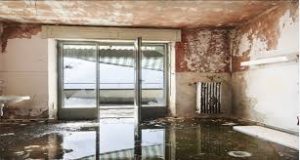Water damage occurs and it isn’t pretty. While water is pure, the other things isn’t. Floods bring particles, mud, sewage, chemicals, and other contaminants into your home. When the water recedes, think what’s left? Even if the water damage originated from a reasonably clean source, such as a fridge water line break or an unattended faucet causing a sink or bathtub overflow, the water blends with dirt surprise deep within your carpets and soaks whatever it is available in contact with. To make matters worse, structural damages like soaked drywall, messed up carpets, and shorted-out electrical systems are common. Finally, unless tidied up quickly, mold makes sure to sprout, even more harming your house. No matter how the flooding began, the damage has been done and you’ve got a mess on your hands.
Security First
When water damage takes place, always put your security first. Turn off the power and make sure that the structure is safe to go into.
Stop the Water from Flowing
Once the location is safe to go into, stopping the flow of water is vital. After all, what good is mopping up a mess when the sludge continues its onward flow? If the water damage is because of a plumbing mishap, shut off the water at its source. For example, utilize the turned off valves below the toilet if your toilet is overflowing. You might need to switch off the main shut-off valve to the home for pipe bursts and other pipes issues.
If the water damage is due to weather, you might have no choice but to ride out the storm. Emergency repair work might lessen the amount of water damage that happens. When possible, do what you can to stop the water from can be found in. Usage sandbags, tarpaulins, containers, storm shutters, and other products and tools to stop the circulation of water.
Cleanup and Dry Out
Mopping up and drying the house is crucial. The earlier that you can do this, the better. Otherwise, the water will take in further causing more damage while mold spores will soon discover the perfect environment from which to flourish. Usage protective clothes, gloves, and a breathing mask, particularly if the water is likely infected with sewage or chemicals. Depending upon the level of the flooding, you might require to remove furnishings and carpets. Before throwing damaged goods out, record the damage for insurance coverage purposes.
Tidy, tidy, and clean up some more. Clean and sanitize any products that can be found in contact with the water. Electronic devices may be unsalvageable. Once again, keep your safety in mind and document any water damage before disposing of damaged products. As soon as the mess is mopped up and cleaned up, air out the structure, utilizing fans to help in burning out the wetness. Keep in mind that mold enjoys a wet environment, so drying out the structure rapidly is vital.
Repair Work Structural Water Damage
Warped floorboards, damaged electrical systems, messed up carpets and drapes, damaged roofing systems, damaged windows, and soaked drywall are common victims of water damage. Depending upon the damage, you may require to hire a contractor to make the repairs.
Water triggers severe damage that gets gradually worse with every hold-up. Luckily, you do not have to clean up on your own. Consider working with a water damage professional to mop up the mess.
